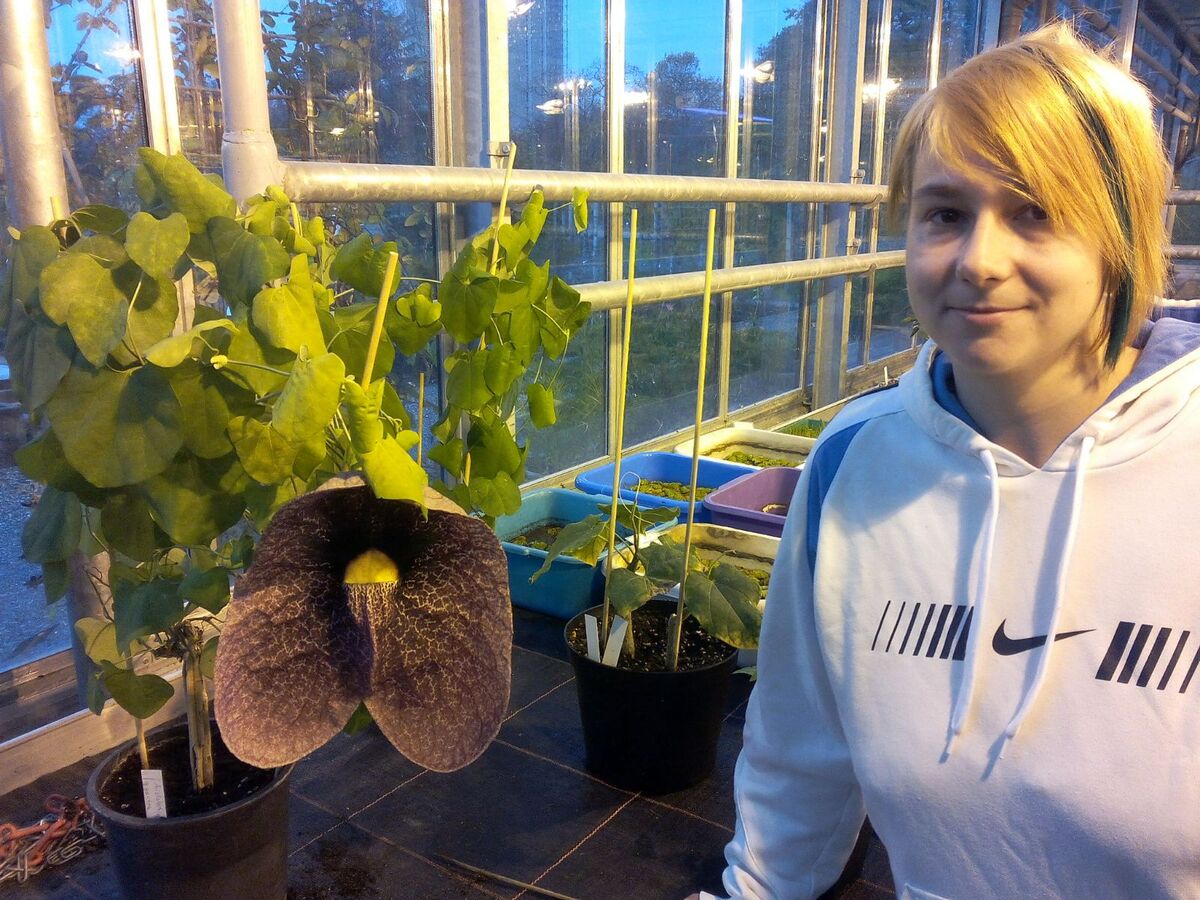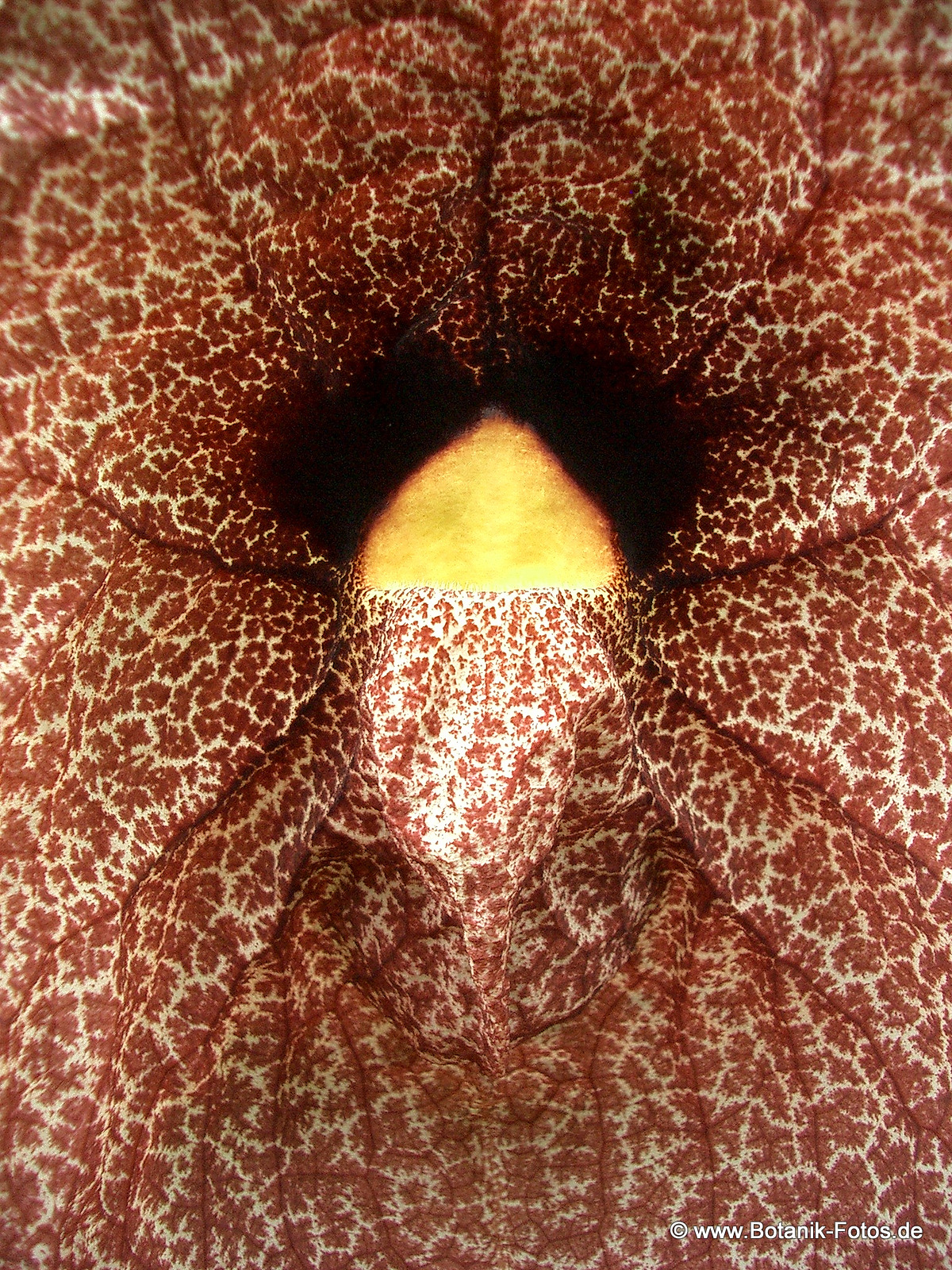Aristolochia gigantea (Riesen-Osterluzei)
Rescued from the Botanical Garden of the University of Saarbrücken, which was closed down in consequence of economical constraints, also the Giant Pipevine has found a new home in our garden. Always, when it produces one of its gigantic flowers, it is shown in the attic.
The Pipevines are found in almost all continents and belong to the most ancient flowering plants. Together with the Peppers they allow a glance back into the period around 100 million years ago, when in the shadow of the dinosaurs the first flowering plants emerged. When the primordial continent broke apart, these primitive plants already existed, such that they can be found in even the remote continents. They are so archaic that it is not possible to assign them to mono- or dicots. The often meat-coloured flowers smell more or less delicately like carcasses, sometimes like fungi - the perfume is dedicated to flies and beetles that almost magically attracted by the pipe-like opening and are kept inside by hairs until they are covered by pollen.
The scientific name for the Pipevines, Aristolochia, is of Greek origin meaning "good for birth". This hints to the medical use of this genus. The compounds produced by the some 500 different species, underly traditional medication, whereby the border between poison and ailment is permeable. The related species A. fangchi, for instance, is used in Traditional Chinese Medicine, but can also damage the kidneys, if used in wrong dose or perparation. The responsible molecule is aristolochic acid, a compound named after this genus. Thus, also for our Pipevine the principle has to be: have a look and take a picture, but avoid culinaric use! However, except for fans of delicately rotten meat, there is little culinaric attraction...

_WEB.jpg)

